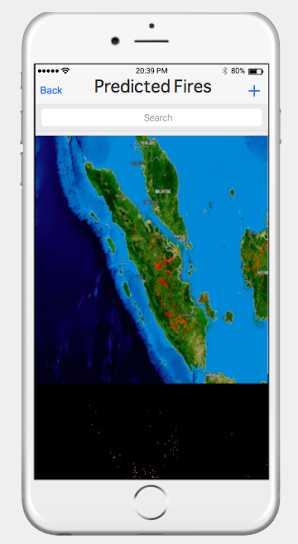The Problem: Indonesian Peatlands Fire
Over the last two decades Petland fires and haze have becoming growing issues in Southeast Asia. Each year thousands of people are forced to evacuate their homes due to potential fire risks and health problems.
The problem is not knowing.
Jerebu provides a mobile platform to help educate, aid, and alert habitants of Southeast Asia that are at risk of Peatland fires.
What is Peat?
Peat is decomposed plant material that has been accumulating for thousands of years. It is considered one of the biggest carbon pools on Earth with a total sequester of 550 Giga tons (Gt). It is equivalent to about 30% of our Earth’s total terrestrial carbon, twice our forest’s biomass, and about 75% the size of all our carbon in atmosphere. In addition, to its massive carbon footprint, Peatlands are home to many vegetation species and animals. About 27.1 Mha (~56%) of global tropical Peatlands are located in Southeast Asia, mainly in Indonesia (22.5 Mha).
So what is the Problem?
In the early 1970’s illegal logging greatly reduced Southeast Asia’s forests. Many of the forests that were cut down were on top of huge carbon pools or peat. These empty lands were shortly after converted to farms. In order to support the logging and agriculture activities, drainage was constructed. The construction of drainage lowered the Peatland’s ground water level. As a result, the Peatland was exposed to oxygen, microbes decomposed the upper part of the peat, and huge amount of CO 2 were emitted to the atmosphere. Presently, biomass burning to clear land has become the main causes of fire. The dry conditions of Southeast Asia along with the high temperature during the dry season worsen the situation.
Who is at risk?
Unfortunately, Peatlands fires spread very quickly. Predominately found in the regions of Sumatra and Borneo Island, the haze from Peatland fires are transported to Singapore and Malaysia. Haze blanket covers these area every year during dry season from end of June to the mid November forcing many of its inhabitants to evacuate the region.
Fire and climate change?
Peatlands store huge amount of CO2. When burned, Peat releases huge amount of CO2. During non-fire period, microbe activities in decomposing peat also play a big role in emitting CO 2. During fire periods, the aerosol emitted from the fires contain huge amount of black carbon which is one of the important components in the atmosphere that contribute to global warming and air pollution in Southeast Asia.
Mobile App



Donate
Your donation will help
- Water
- Food
- Medical Supplies
- Money
Water
Food
Medical Supplies
For more information about medical supplies click hereMoney
Where to Donate?
Donation Summary
Water:
Food:
Medical:
Money:
Total:
